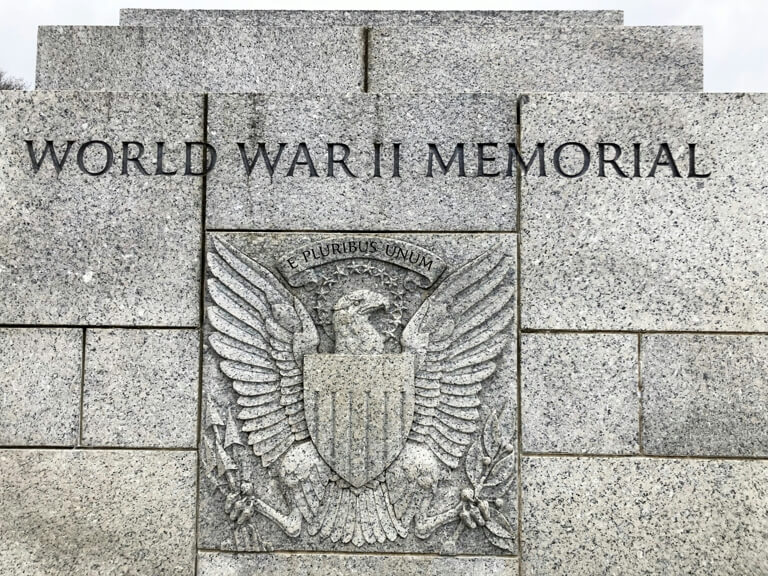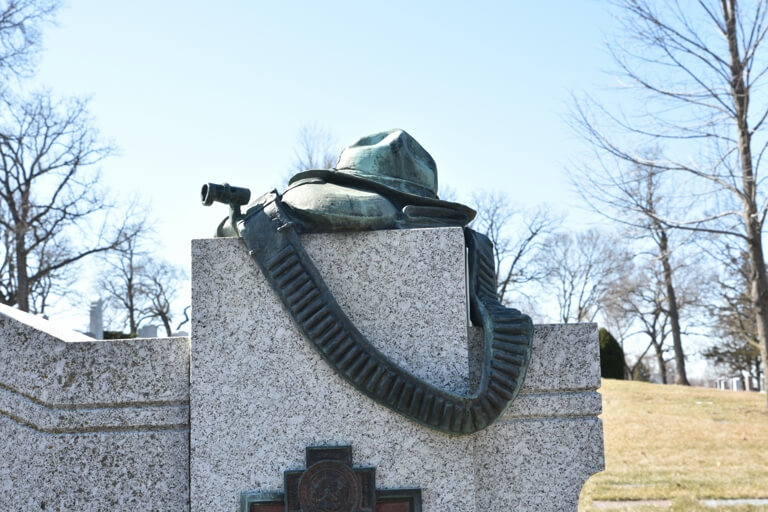Planning Your War Memorial Pilgrimage: A Comprehensive Guide
4/20/2025

For many Americans, visiting war memorials is more than just tourism—it’s a pilgrimage that connects us to our national history, honors the sacrifices of service members, and helps us understand the true cost of freedom. Whether you’re a veteran, a family member of someone who served, a history enthusiast, or an educator, planning a thoughtful visit to America’s war memorials can be a profound and moving experience.
This comprehensive guide will help you plan a meaningful war memorial pilgrimage, from selecting which memorials to visit to preparing emotionally for the experience.
Choosing Your Destinations
The United States is home to thousands of war memorials, ranging from iconic national monuments to deeply personal local tributes. When planning your pilgrimage, consider these factors:
Personal Connections
If you have a family member or friend who served in a particular conflict, memorials related to that war may hold special significance. For those with loved ones who made the ultimate sacrifice, visiting the memorial where their name is inscribed can be an especially powerful experience.
James Reston, author of “A Rift in the Earth: Art, Memory, and the Fight for a Vietnam War Memorial,” notes that “for many families, finding a loved one’s name on the Vietnam Veterans Memorial transforms an abstract loss into something tangible—a place where grief can be located and expressed.”
Historical Interests
Each memorial offers insights into different periods of American history. The Revolutionary War and Civil War memorials tell the story of a nation being born and tested. World War I and II memorials speak to America’s emergence as a global power. More recent memorials address the complex legacies of Vietnam, Korea, and the Global War on Terror.
Consider which historical periods resonate most with you or align with your educational goals if you’re planning a trip for students.
Geographic Clustering
Many significant war memorials are clustered in particular locations, making it possible to visit several in a single trip:
Washington, D.C. is home to the National Mall memorials (Vietnam Veterans Memorial, Korean War Veterans Memorial, World War II Memorial), as well as Arlington National Cemetery, the Marine Corps War Memorial (Iwo Jima), and many others.
Boston and surrounding areas feature numerous Revolutionary War sites, including Bunker Hill Monument and Lexington and Concord battlefields.
Gettysburg, Pennsylvania offers one of the most comprehensive Civil War memorial landscapes in the country.
Hawaii is home to the USS Arizona Memorial and other Pearl Harbor historic sites.
Normandy, France contains numerous memorials to American service members who fought in the D-Day invasion and subsequent European campaign.
Planning Your Itinerary
Once you’ve selected your destinations, consider these factors when planning your itinerary:
Time Allocation
Allow sufficient time at each memorial for a meaningful experience. While you might be able to walk through some smaller memorials in 30 minutes, larger sites like Arlington National Cemetery or the National World War II Museum in New Orleans deserve at least half a day.
”The biggest mistake visitors make is trying to rush through these sacred spaces,” says Robert Wilkins, former president of the Vietnam Veterans Memorial Fund. “These aren’t places to check off a list—they’re places for reflection and connection.”
Special Programs and Events
Many memorials offer special programs that can enhance your visit:
- The changing of the guard ceremony at the Tomb of the Unknown Soldier in Arlington National Cemetery
- Ranger-led talks at National Park Service memorial sites
- Wreath-laying ceremonies (often held on Memorial Day, Veterans Day, and other significant dates)
- Living history demonstrations at battlefield sites
- Evening candlelight tours at certain memorials
Check memorial websites for program schedules and consider timing your visit to coincide with these special events.
Accessibility Considerations
Most major national memorials are accessible to visitors with mobility challenges, but some historic sites and smaller memorials may present difficulties. Research accessibility options in advance:
- Wheelchair availability (many larger sites offer free wheelchair loans)
- Accessible pathways and entrances
- Audio description services for visitors with visual impairments
- Sign language interpretation (often available by request)
- Sensory-friendly visiting times
The National Park Service website provides detailed accessibility information for the memorials it manages.
Preparing for the Emotional Experience

Visiting war memorials can evoke powerful emotions, especially for veterans and family members of those who served. Consider these suggestions for emotional preparation:
Research and Context
Learning about the historical context of the conflict and the memorial itself can deepen your experience. Before your visit, consider:
- Reading first-hand accounts from those who served
- Watching documentaries about the conflict
- Familiarizing yourself with the memorial’s design and symbolism
- Learning about the debate and decision-making that went into creating the memorial
”Understanding the context helps visitors connect more deeply with what they’re seeing,” explains historian Edward Linenthal. “It transforms the memorial from a static object into a dynamic site of meaning.”
Bringing Mementos
Many visitors choose to bring items that enhance their connection to the memorial:
- Photographs of family members who served
- Letters or journal entries
- Military insignia or medals
- Flowers or wreaths for placement at the memorial
At some memorials, particularly the Vietnam Veterans Memorial, leaving items has become a tradition. These items are collected and preserved as part of the memorial’s historical record.
Planning for Reflection
Build time into your schedule for quiet reflection. Consider:
- Visiting early in the morning or late in the day when crowds are smaller
- Bringing a journal to record your thoughts and feelings
- Finding a quiet spot to sit and reflect after touring the memorial
- Participating in any available commemorative activities
”The power of these places often hits people unexpectedly,” notes Sarah Bloomfield, director of the United States Holocaust Memorial Museum. “Having space in your schedule to process those emotions is important.”
Practical Considerations
Timing Your Visit
Consider these factors when deciding when to visit:
Seasonal considerations:
- Spring and fall generally offer pleasant weather at most memorial sites
- Summer brings larger crowds but often features special programs
- Winter visits can provide a more solitary experience, though outdoor memorials may be affected by weather
Significant dates:
- Memorial Day (last Monday in May)
- Veterans Day (November 11)
- Pearl Harbor Remembrance Day (December 7)
- D-Day Anniversary (June 6)
- Patriot Day (September 11)
Visiting on these days can be especially meaningful but will also mean larger crowds and possible ceremony-related closures.
Photography Etiquette
Photography is generally permitted at most war memorials, but observe these guidelines:
- Be respectful of others who may be having emotional moments
- Avoid using flash photography in indoor memorial spaces
- Never climb on or touch memorial structures for photo opportunities
- Ask permission before photographing individual visitors, especially those who appear to be in mourning
- Consider putting the camera away for periods to fully experience the memorial without the lens as a barrier
Appropriate Behavior
War memorials are solemn places that deserve respectful behavior:
- Speak in hushed tones
- Follow any posted rules about touching monuments
- Observe silence in designated areas
- Remove hats during ceremonies or when otherwise appropriate
- Supervise children and explain the significance of the place to them
- Dress respectfully, particularly when attending ceremonies
Special Considerations for Different Visitor Types
Veterans
For veterans visiting memorials related to conflicts in which they served, the experience can be particularly intense. Consider:
- Visiting with a battle buddy or supportive friend/family member
- Connecting with veterans service organizations that may offer support or guided tours
- Being aware of potential triggers and having a plan if the experience becomes overwhelming
- Taking advantage of any veteran-specific programs offered at the memorial
Many veterans find that while the visit may be emotionally challenging, it ultimately provides a sense of closure and connection.
Families
For families visiting memorials together:
- Prepare children in age-appropriate ways for what they’ll see and experience
- Use the memorial’s educational resources to engage younger visitors
- Consider the emotional needs of family members who may have personal connections to the memorial
- Plan breaks and lighter activities to balance the emotional intensity
- Use the visit as an opportunity for intergenerational sharing of stories and experiences
Educators
For teachers bringing student groups:
- Prepare students thoroughly before the visit with background information
- Set clear expectations for behavior
- Provide structured activities that engage students with the memorial
- Allow time for questions and discussion
- Consider having students keep reflection journals
- Follow up the visit with classroom activities that build on the experience
Many memorials offer educator resources and specialized programs for student groups.
Documenting and Sharing Your Experience
Consider how you might preserve and share your memorial pilgrimage:
Personal Documentation
- Keep a journal of your thoughts and experiences
- Create a photo essay that captures meaningful moments
- Record oral histories from veterans or family members who accompany you
- Collect memorial brochures, maps, and other materials in a scrapbook
Sharing with Others
- Share your experience with younger generations through conversations and stories
- Consider contributing photographs or testimonials to memorial websites
- Participate in oral history projects associated with memorials
- Use social media respectfully to share insights and encourage others to visit
”When visitors share their experiences thoughtfully, they extend the memorial’s purpose,” says Thomas Crane, a National Park Service interpreter. “They become part of the ongoing work of remembrance.”
Virtual Pilgrimage Options
For those unable to visit in person due to distance, health concerns, or other limitations, virtual options are increasingly available:
- Virtual tours on memorial websites
- Google Arts & Culture presentations of major memorials
- Documentary films about specific memorials
- Interactive apps that provide memorial experiences
- Social media live streams of ceremonies and events
While not the same as being physically present, these virtual options can still provide meaningful connections to these important sites of memory.
Extending the Experience
A memorial pilgrimage doesn’t have to end when you return home:
- Support organizations that maintain and preserve war memorials
- Volunteer with veterans service organizations
- Participate in local Memorial Day or Veterans Day observances
- Share your experience with community groups
- Research and visit local memorials in your area
- Support educational programs that help young people understand the significance of these memorials
Conclusion
A thoughtfully planned war memorial pilgrimage can be a profound experience that deepens your connection to American history and honors those who served. By preparing practically and emotionally, allowing sufficient time for reflection, and approaching these sacred spaces with respect, you can create a meaningful experience that will resonate long after your visit.
As historian John Bodnar writes, “Memorials ask us not just to remember but to consider what is worth remembering and why.” Through your pilgrimage, you participate in this ongoing process of collective remembrance that helps define who we are as a nation and what values we hold dear.
Whether you’re standing before the solemn black granite of the Vietnam Veterans Memorial, walking among the 4,048 gold stars of the World War II Memorial (each representing 100 American military deaths), or visiting a small hometown monument to local heroes, you become part of a community of remembrance that spans generations and affirms that sacrifice will not be forgotten.